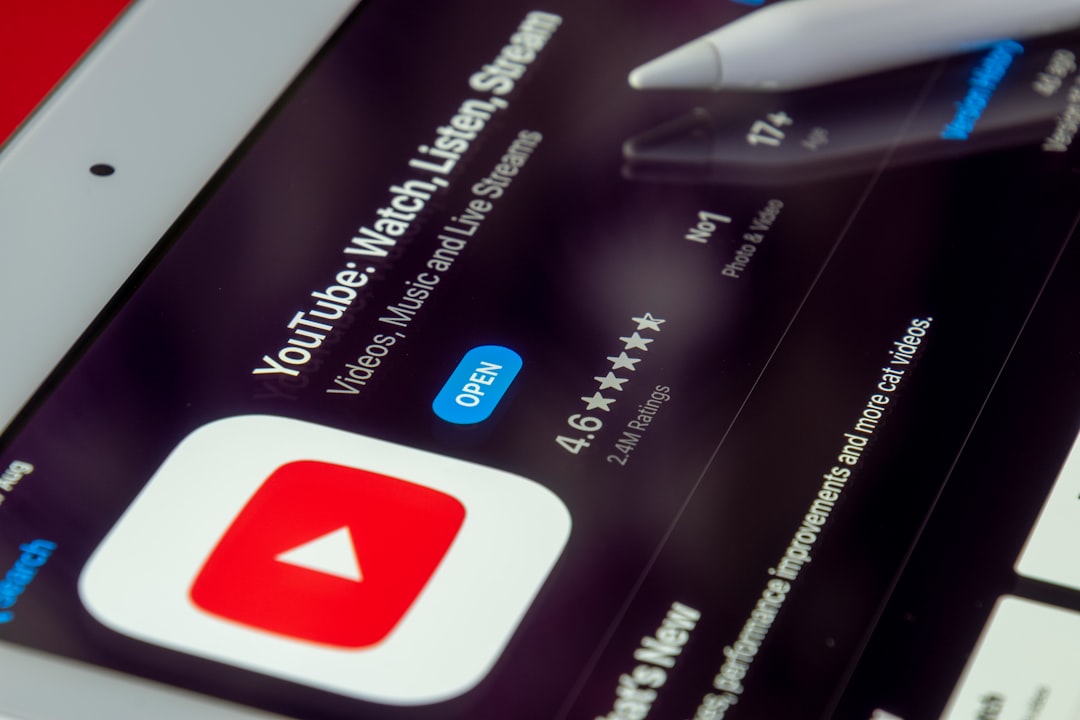Vid Automated – Create Videos with Automation and Picture
Are you tired of spending hours creating videos for your business? Look no further than Vid Automated! With our automation tool, powered by the Pictory.AI video creator platform, you can create professional-looking videos in a fraction of the time it takes to do it manually. Simply upload your video scripts in a zip folder, and let Vid Automated do the rest. You’ll be amazed at how quickly and easily you can create engaging video content that will help your business stand out from the competition. Save time and boost your video marketing efforts with Vid Automated today!
Table of Contents
- Introduction
- Maximizing video SEO with embedded YouTube Videos
- Understanding YouTube’s search and recommendation algorithms
- Optimizing video content for YouTube ranking
- Enhancing YouTube channel SEO for maximum exposure
- Utilizing video marketing and promotion strategies
- Analyzing keyword research for effective SEO optimization
- Improving viewer retention and audience engagement
- Maintaining a consistent video upload schedule for user session length
- Conclusion
- Frequently Asked Questions
Introduction
Are you looking to boost your website’s SEO and drive more traffic to your content? Look no further than the power of embedded videos! In today’s digital age, video content is king, and harnessing its potential can take your SEO strategy to the next level. By integrating engaging videos directly into your web pages, you can increase user engagement, reduce bounce rates, and improve your search engine rankings. In this article, we will explore the various benefits of using embedded videos for SEO and provide you with practical tips on how to effectively incorporate them into your website.
Maximizing video SEO with embedded YouTube Videos
Maximizing video SEO with embedded YouTube videos can greatly benefit your website’s visibility and user engagement. By embedding YouTube videos on your site, you can provide valuable and engaging content for your visitors, keeping them on your site longer. This can reduce bounce rates and improve user experience, factors that search engines like Google consider when ranking websites.
Additionally, embedding YouTube videos can improve your site’s SEO by increasing dwell time, which is the amount of time visitors spend on your site. Search engines interpret longer dwell times as a signal of valuable content, thus potentially boosting your site’s ranking in search results. Using relevant keywords in the video title, description, and tags can also help search engines understand the content of the video, further enhancing your SEO efforts.
Furthermore, embedded videos can attract more backlinks and social shares, which are important ranking factors for search engines. When other websites link to your pages with embedded videos, it can signal to search engines that your content is authoritative and relevant, potentially improving your site’s SEO performance.
Understanding YouTube’s search and recommendation algorithms
Understanding YouTube’s search and recommendation algorithms is crucial for creators looking to optimize their videos for better visibility and engagement. The search algorithm determines the results shown when users enter a query in the search bar. It takes into account various factors like video title, description, tags, and engagement metrics to rank videos.
On the other hand, the recommendation algorithm suggests videos to users based on their watch history, preferences, and behavior on the platform. It aims to keep users engaged by recommending content they are likely to enjoy, even if they haven’t specifically searched for it.
Creators can improve their video’s chances of being discovered by using relevant keywords, creating compelling thumbnails and titles, and encouraging engagement through likes, comments, and shares. By understanding how these algorithms work, creators can strategically position their videos to reach a larger audience and grow their channel effectively.
Optimizing video content for YouTube ranking
Optimizing your video content for YouTube ranking is crucial to ensure your videos are discoverable and reach a wider audience. One important aspect is to do keyword research and select relevant keywords for your video title, description, and tags. These keywords should accurately reflect the content of your video and match what users are searching for.
Another key factor is creating engaging and high-quality video content that captivates viewers and encourages them to watch till the end. YouTube values watch time, so the longer viewers engage with your video, the better it may rank. Additionally, optimizing your video file name and using an attention-grabbing thumbnail can improve click-through rates and overall visibility.
Interacting with your audience through comments, likes, and shares can also signal to YouTube that your content is valuable and engaging. Finally, promoting your videos on other platforms and websites can drive traffic to your YouTube channel and boost your video’s ranking in search results.
Enhancing YouTube channel SEO for maximum exposure
Enhancing your YouTube channel’s SEO is crucial for maximizing exposure and reaching a larger audience. To achieve this, start by optimizing your video titles, descriptions, and tags with relevant keywords that are likely to be searched by your target audience. This will increase the chances of your videos appearing in search results and recommendations.
Another important aspect is to create engaging and high-quality content that keeps viewers watching. YouTube’s algorithm takes into account watch time and user engagement, so make sure your videos are informative, entertaining, and valuable to your viewers.
Furthermore, make use of playlists to organize your videos and keep viewers on your channel longer. This can help increase your channel’s authority in a particular niche and improve SEO rankings. Additionally, promote your videos on other social media platforms to drive traffic to your channel and increase visibility.
Utilizing video marketing and promotion strategies
Video marketing has become an integral part of SEO strategies for businesses looking to enhance their online presence and reach a wider audience. By utilizing video content, companies can engage viewers more effectively, convey information in an engaging and memorable way, and improve their website’s overall user experience.
One of the key benefits of video marketing is its ability to boost search engine rankings. Search engines like Google prioritize websites with relevant and high-quality video content, leading to higher visibility and organic traffic. Videos also tend to keep visitors on a webpage longer, reducing bounce rates and signaling to search engines that the content is valuable.
Furthermore, videos are easily shareable on social media platforms, increasing brand exposure and driving traffic back to the website. By incorporating keywords in video titles, descriptions, and tags, businesses can optimize their videos for search engines, improving their chances of being discovered by users searching for related content.
Analyzing keyword research for effective SEO optimization
Keyword research is a critical component of effective SEO optimization. It involves identifying the specific words or phrases that users are searching for in search engines like Google. By analyzing keyword research data, website owners can understand the terms their target audience is using, the search volume for those terms, and the level of competition for ranking on those keywords.
Effective keyword research helps in determining which keywords to target in website content, meta tags, and other SEO elements. By focusing on relevant keywords that have a high search volume but low competition, websites can improve their chances of ranking higher in search engine results pages (SERPs). This targeted approach can drive organic traffic to the website, increase visibility, and ultimately lead to more conversions and sales.
Improving viewer retention and audience engagement
Embedded videos can significantly improve viewer retention and audience engagement on websites. By incorporating videos into your content, you can create a more dynamic and visually appealing experience for users. Videos have been found to capture and maintain viewer attention more effectively than text or images alone.
Additionally, videos allow you to convey information in a more engaging and memorable way. This can help to increase the time users spend on your website, leading to higher viewer retention rates. The longer visitors stay on your site, the more likely they are to engage with your content, products, or services.
Moreover, interactive elements in videos, such as clickable links, call-to-action buttons, or quizzes, can further enhance audience engagement. These features encourage viewers to interact with your content, providing them with a more personalized and immersive experience. Overall, embedded videos can play a crucial role in keeping users interested and involved with your website.’
Maintaining a consistent video upload schedule for user session length
Maintaining a consistent video upload schedule is crucial for user session length and viewer engagement. When users know when to expect new video content, they are more likely to return to the website or platform frequently. This regularity builds anticipation and loyalty among viewers, leading to longer session lengths and increased watch time.
Consistency in video uploads also helps with search engine optimization (SEO) by signaling to search engines that the website is active and regularly updating its content. This can improve the website’s visibility in search results and attract more organic traffic. Additionally, longer user session lengths are a positive ranking factor in search algorithms, indicating that users find the content valuable and engaging.
By creating and sticking to a consistent video upload schedule, content creators can effectively boost user session length, optimize for SEO, and cultivate a dedicated audience base.
Conclusion
Don’t miss out on the opportunity to boost your SEO with YTRankBoost! Embed your YouTube videos on hundreds of websites and web 2.0 properties effortlessly. Take your video content to the next level and increase your online visibility. Purchase YTRankBoost now at https://wwn.sslwebcart.com/ytrankbooster/.














